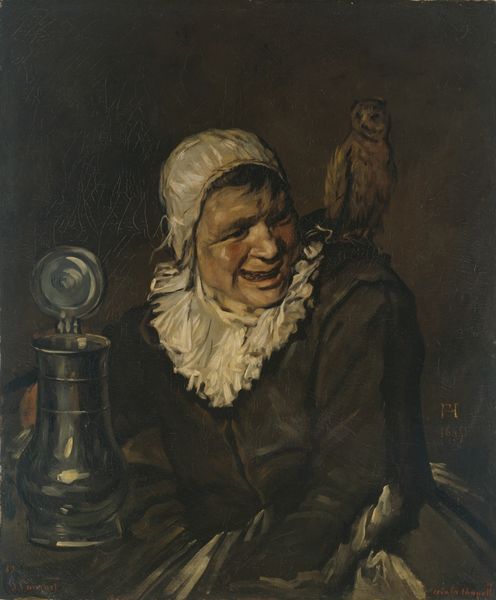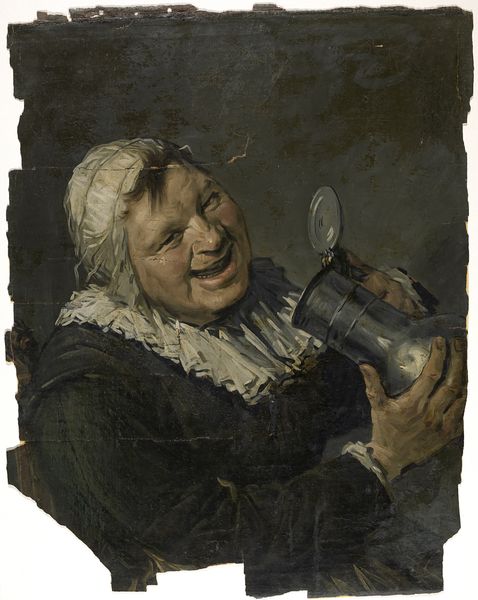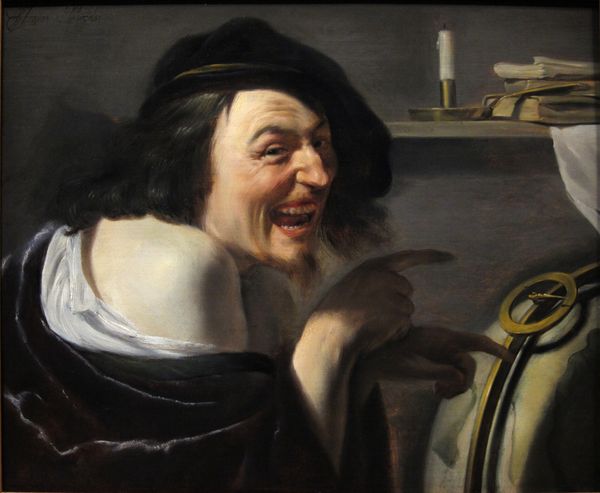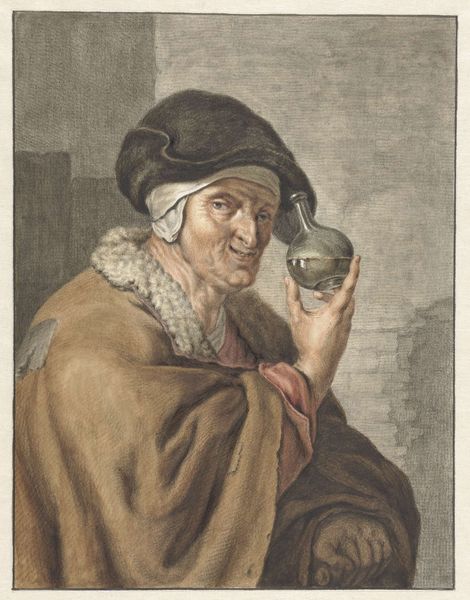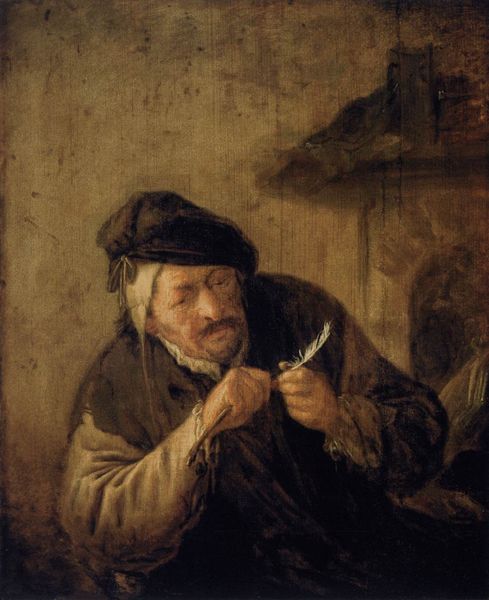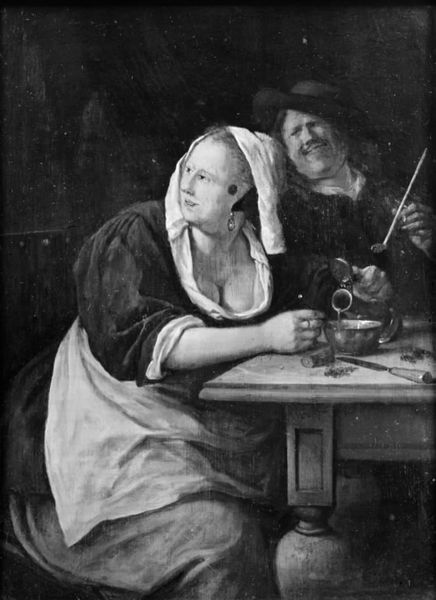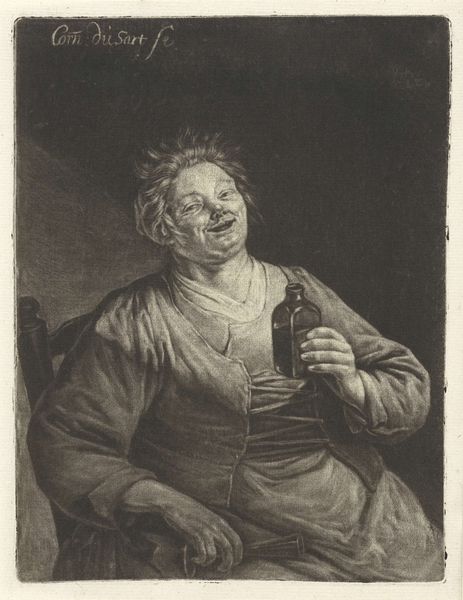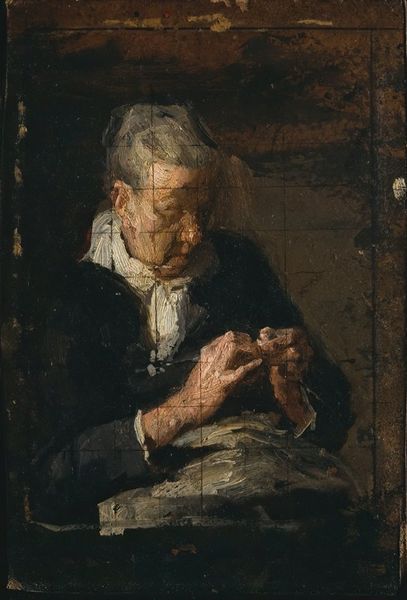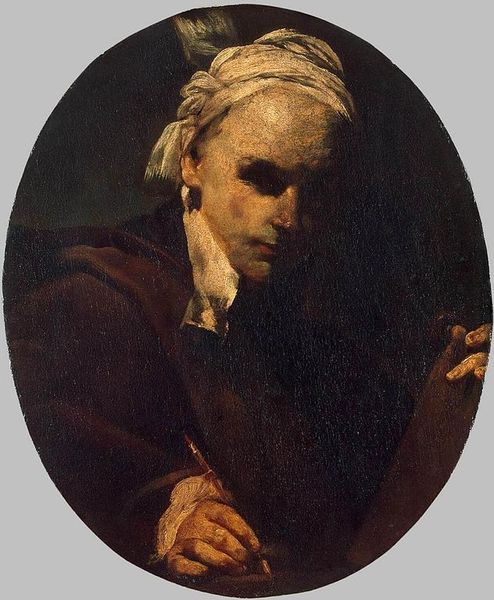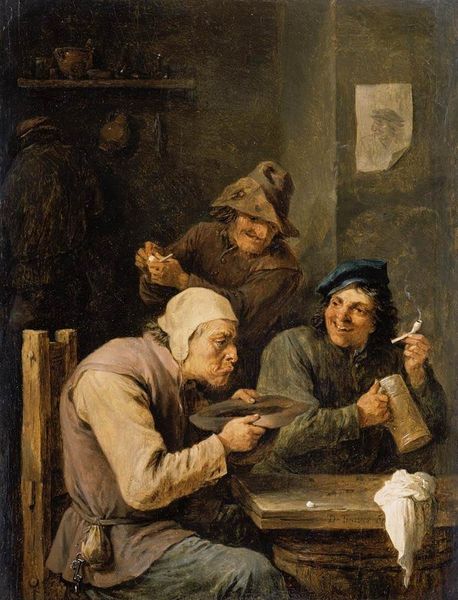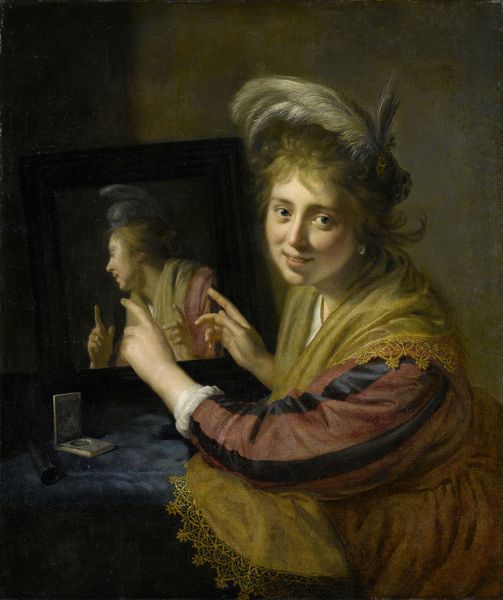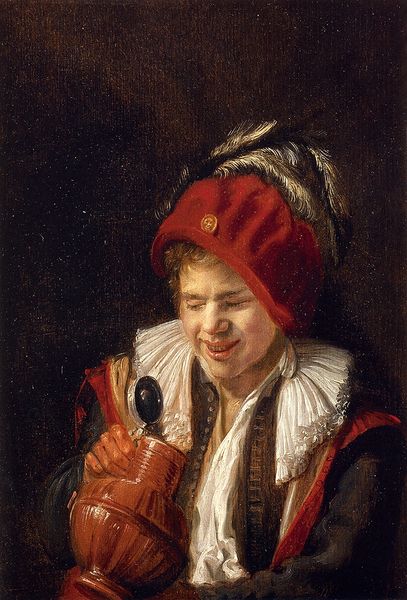
painting, oil-paint
#
portrait
#
narrative-art
#
baroque
#
dutch-golden-age
#
painting
#
oil-paint
#
genre-painting
Dimensions: 64 x 75 cm
Copyright: Public domain
Curator: Today, we're looking at Frans Hals' "Malle Babbe," painted around 1635. The artwork resides in the Gemäldegalerie in Berlin. Editor: My first impression? Raw, unfiltered, slightly unsettling... but there's an incredible energy. That lopsided grin and the bird… what is going on here? Curator: Hals captures this figure with remarkable, almost crude brushstrokes. The impasto is particularly visible in the ruff collar and around her eyes, adding a tactile dimension. What semiotic readings do you think these signs elicit from an early modern audience? Editor: Given the era, this likely depicts a marginalized figure, maybe someone deemed mad or foolish. The owl, often associated with wisdom, is ironically perched on her shoulder, perhaps symbolizing her alleged lack thereof. But what is interesting to me is her perceived insanity – it could be read as a resistance to societal expectations, a rebellion against the rigid norms of 17th-century Dutch society. Curator: Interesting. The stark chiaroscuro enhances the dramatic intensity of the scene, creating a spotlight effect on Babbe’s face and her unusual companion. Note also the diagonal thrust of the composition, anchored by the large tankard that inflects our understanding of Hals' virtuosity in portraying reflective surfaces. Editor: Right. The tankard further hints at Babbe's social standing. It suggests she might frequent taverns, perhaps even be perceived as an alcoholic. But there's a certain agency in her expression, almost as if she owns her space despite societal judgment. Considering that women at the time had no political power, this would not have gone unnoticed by viewers of this artwork. Curator: I would suggest that there is something much more intimate occurring in this painting; the painter’s engagement with form precedes political concerns. To interpret its lasting appeal based solely on class relations seems like a rather ham-fisted imposition of the present. Editor: Agreed – although the social context would certainly imbue this piece with deeper significance for contemporary viewers. It begs questions of how we portray individuals on the margins of society even today. Curator: The beauty, though, lies within Hals’ exceptional manipulation of pigment and form. Editor: Precisely. We are still unraveling the interplay of technique and context today, and for me, it just enriches the experience.
Comments
No comments
Be the first to comment and join the conversation on the ultimate creative platform.
